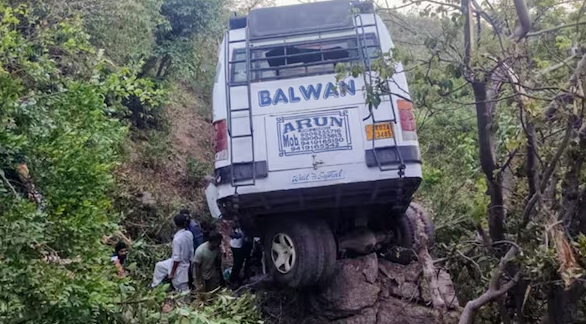Terror in Reasi (GS Paper 3, Security)

Introduction
- The terror incidence in Reasi, UT of J&K showed that militancy in Kashmir is far from over.
- The timing and the place of incidence raise serious question on the security situation in Jammu and Kashmir.
Government’s claim on the militancy in J&K
- In January, Home Minister Amit Shah flagged the decline in terrorist incidents in Jammu and Kashmir — they were down, he said, by 66 per cent since the abrogation of Article 370.
- Two months later, in his first visit to the Valley since the abrogation of Article 370, Prime Minister Narendra Modi spoke of a heartening rise of tourism in J&K.
- Higher voter turnouts in most parts of the Union Territory in the recently concluded Lok Sabha elections added to the stirrings of hope and optimism.
The ground reality regarding militancy in J&K
- Now, a terrorist attack on a bus carrying pilgrims, on the day PM Modi and his council of ministers were being sworn-in in Delhi, has underscored the fragility of peace.
Why terrorist attack in Raesi is a big concern for security establishments?
- Reasi is a district where militancy has had a relatively small imprint.
- The last time terrorists struck in the region was in May 2022, when a bomb attack killed four Vaishno Devi pilgrims and injured more than 20.
- Reasi, along with Rajouri and Poonch, was a hotbed of militancy in the 1990s.
- Subsequently, the three districts in Jammu seemed to have contained the insurgency, until 2021, when terrorists attacked an army patrol in Poonch killing nine soldiers.
- In the past three years, terror attacks in Rajouri and Poonch have killed 38 soldiers and 11 civilians.
The current shift in terrorists’ tactics
- The strengthening of the counter-infiltration grid in the Kashmir Valley could be a possible reason for a shift in terrorists’ actions towards these Jammu districts.
- However, unlike Rajouri and Poonch, Reasi is not close to the LoC.
- The pressure from security forces in the two districts, where terrorism has raised its head again since 2021, could have forced the militants to search for a new battleground.
- This development poses new security concerns.
- The Pir Panjal range, which separates Kashmir from Jammu, runs through the three districts.
- Passes in the range provide seasonal access to PoK and the Pir Panjal’s difficult terrain and dense forests allow the militants escape routes as well as launchpads for the attacks.
- The Reasi strike testifies to this mode of operation — militants reportedly hiding in a forest ambushed the bus carrying pilgrims.
The metamorphism of LeT into TRF
- After the conditions imposed by the FATF in Pakistan in recent years, terrorist outfits such as the Lashkar-e-Taiba (LeT) have often used proxies to avoid international scrutiny.
- The Resistance Front (TRF), one such group, has reportedly claimed responsibility for Sunday’s attack.
- The outfit’s presence in J&K is borne out by the UT police’s records.
- Its data for 2022 shows that most of the militants killed in J&K belonged to either the LeT or TRF — an indication of the persistence of some of the clandestine networks, developed in the past 30 years.
- Historically, however, insurgency in the Jammu region has not been sustained for long because it lacked local support.
- In fact, in July 2022, Reasi residents had overpowered LeT militants and handed them over to security forces.
Conclusion
- After Reasi attack, it is time to redraw the red lines. The Centre must step up its vigil, even as it moves towards honouring its commitment to holding assembly elections in J&K.


